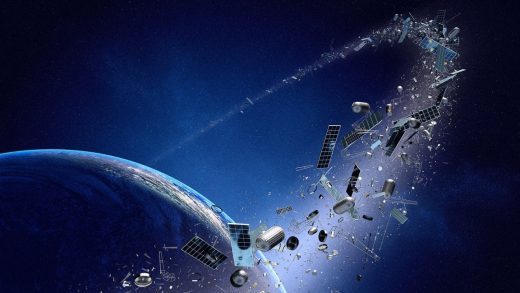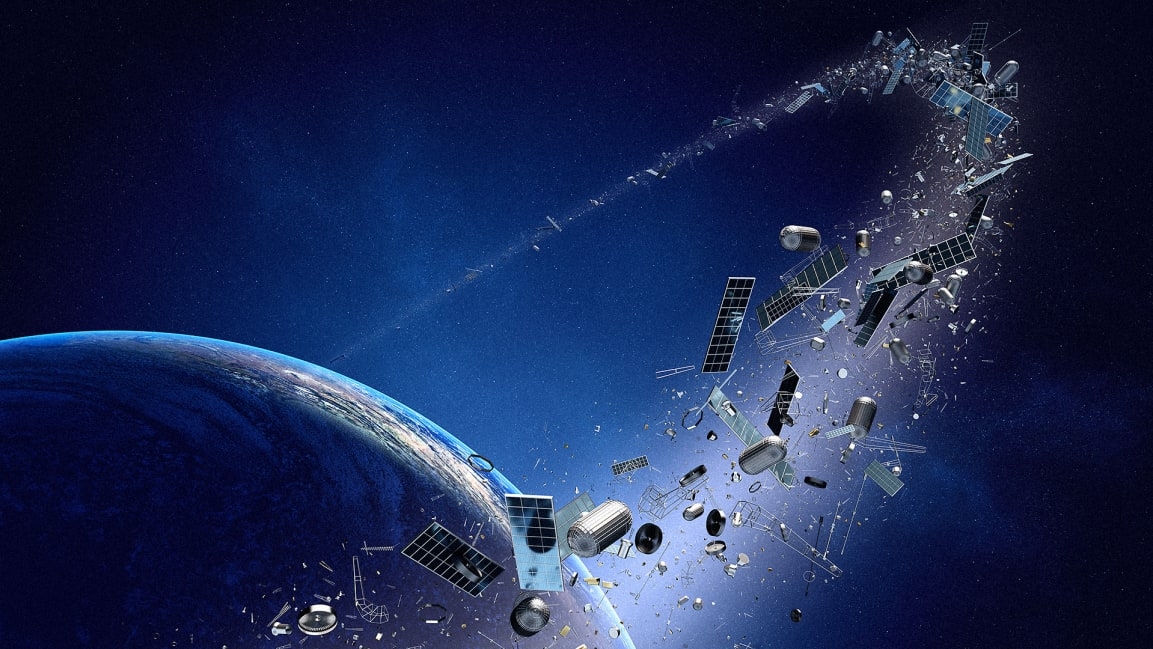Earth might get its own Saturn-like rings—made of space trash
For eons, Earth has been deprived of planetary bling—none of Jupiter’s 53 named moons, none of Saturn’s spectacular rings. But researchers at the University of Utah predict that could be changing. “Earth is on course to have its own rings,” one of the researchers, Jake Abbott, tells the Salt Lake Tribune. However, while other planets’ are basically rock, dust, and ice, our rings will be fitting for the planet whose lifeforms are polluting their own sky: “They’ll just be made of junk.”
Even wilder, this is because the researchers say we’ll make them intentionally to clear a path in the sky. Right now, the night sky doesn’t look polluted. But our low-Earth-orbit space race is only beginning: Jeff Bezos wants to send 3,200 more satellites into orbit, while Elon Musk’s Starlink has already put 2,000 in orbit and has plans to launch another 40,000 in the coming decades—15 times the number currently in the sky.
The result is that space pollution keeps growing. More satellites mean more defunct satellites, which mean more satellite pieces. According to the European Space Agency, we currently have 170 million pieces of space debris encircling the planet, some at speeds of up to 18,000 miles per hour. Inhabitants of Earth aren’t really even aware of what’s going on up there: For instance, Russia just blew up a massive broken 4,850-pound satellite last week, creating a cloud of fragments so large that the International Space Station astronauts nearly had to evacuate. (They ultimately just sheltered in place.) The station also had to maneuver three times in 2020 to avoid debris.
Attempts to remove space pollution are very much still works in progress. (The European Space Agency is apparently spending $102 million to retrieve one 247-pound piece of space trash.) The good news—doubly good if metal trash rings sound cool—is that the University of Utah researchers who think we’ll be giving Earth rings are making this prediction because they say they’ve also found the way to create them. They argue their plan could make outer space less dangerous. Their team of robotics engineers has developed a magnetic field they claim can move objects in space, even nonmagnetic ones. In an experiment outlined in their new paper in Nature, the team explains how it was able to move a copper ball through water on a raft by spinning magnets so fast that it created an electrical current. The magnets not only guided the ball’s direction, but could also rotate it. They argue robots could be blasted into space to use this same method, rearranging Earth’s space pollution into nice, clean Saturn-ring-like lines.
Fast Company , Read Full Story
(26)



